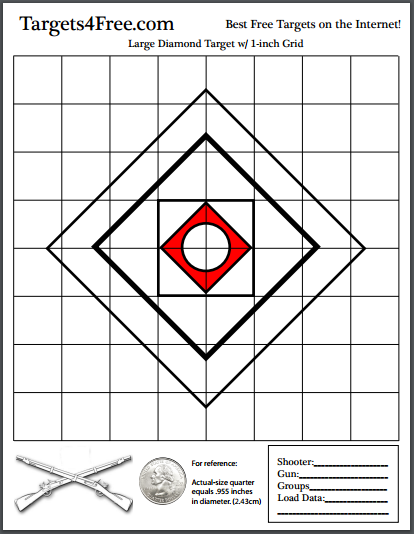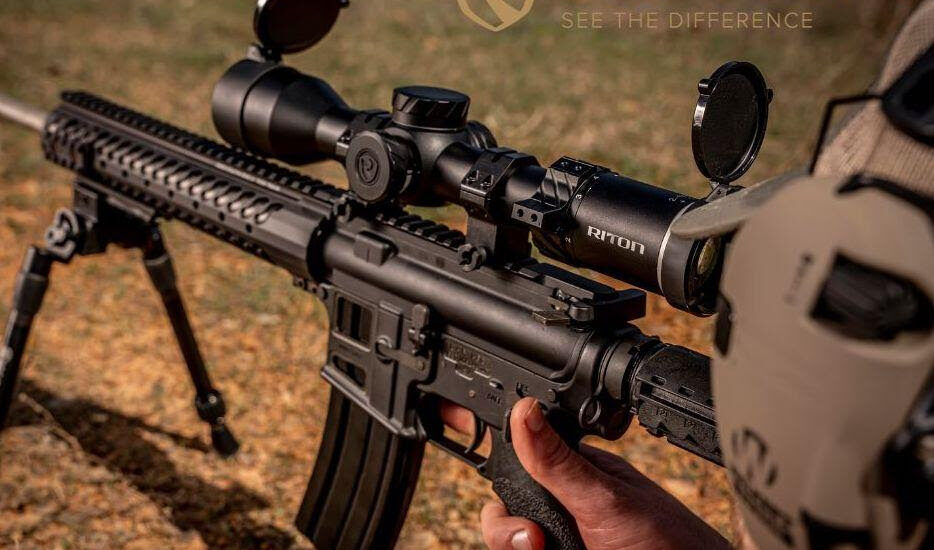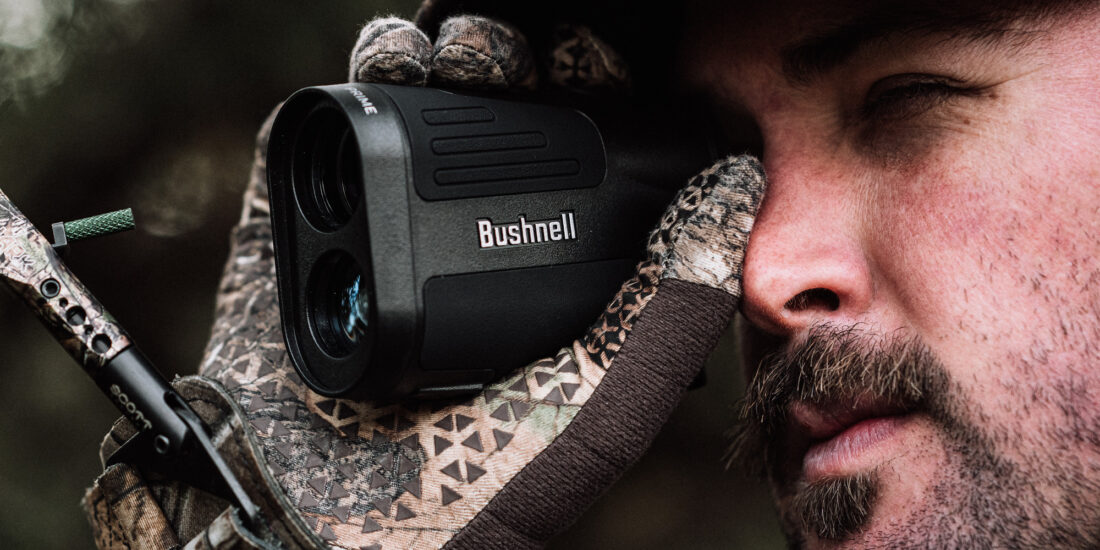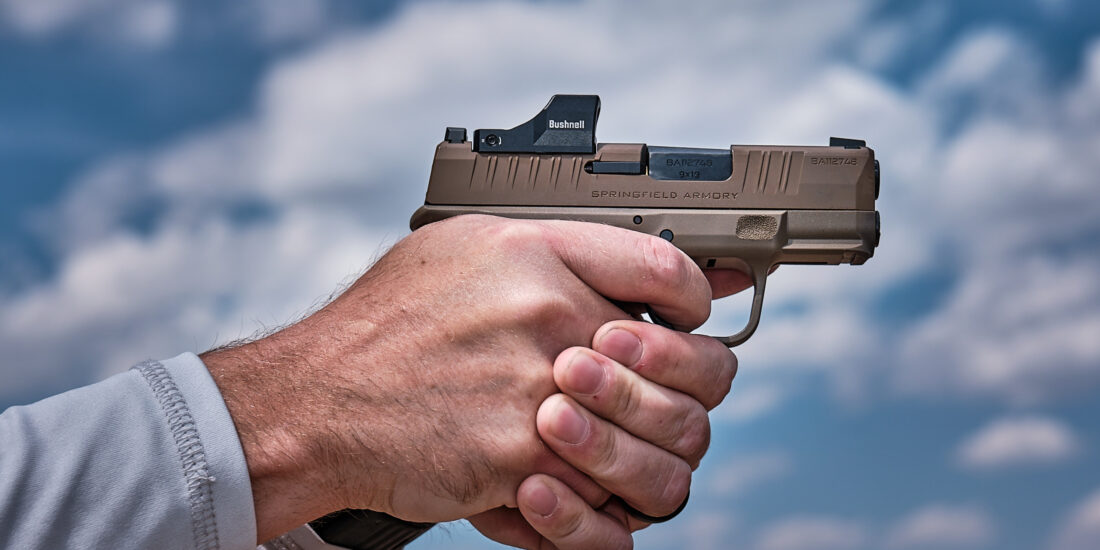Slings, QD Studs, Lube and Optics: Tricks of the Trade

This typing up articles thing is fairly foreign to me- and this is the major reason why. First, there’s nothing that I have to contribute that hasn’t already been covered before. Every time an idea comes to me, all I’ve got to do is fire up the You Tube, and there it is. Usually there are several reviews by a cast of characters, and by gleaning through each sample, there are kernels of knowledge.
I’d made a list of topics to cover, and before pecking away and going over items that were already done, there was really nothing for me to offer. This merely reinforces my steadfast belief that going forward on a topic was pretty much a waste of time. Here is one thing I firmly believe about any hobby any of us may have- no matter what you know to be true, all of your knowledge will be treated as subjective. Getting down to brass tacks- what works for some may not for others.
So, I put some things together in the hopes of helping fellow enthusiasts, and hopefully there will be something useful for someone. Many (if not all) of these topics are things that I’m personally sick of, and maybe you are, too.
Hydrodip- Not really sure if this is even a thing anymore, and hopefully, it’s not. For that matter, I’m sick of Cerakote, too. Everyone wants their firearms to be performers, but at what point do we leave sanity behind? Ultimately, firearms become ostentatious totems- which defeats the whole concealed notion. I know two individuals who had the fortitude to Hydro dip their guns- and it’s like a 20 dollar tattoo- don’t look too close, and all is well. Some of us paint our firearms, and the beauty of this is that I can buy a lot of Krylon against the cost of Cerakote. I can also change color schemes to match the season too, if need be. My paint isn’t pretty, it’s done to fool the human eye, which isn’t too difficult.
Here is a good rule to live by- let your friends buy lots of expensive gear, and then you get to try it. If you’re a member of a gun club, chances are good that there are some truly decent people there who may be willing to let you see what they use. Words of caution about gun clubs- it’s a Federal Law that a relative of Joe Dirt is a Lifetime Member, and he has to stay at your club. This is the guy who takes everyone’s brass if they don’t want it, and he does not follow proper loading guidelines. It’s also interesting to note that you won’t see him shooting anything, and he will inevitably want to sell you some load that he’s “whipped up”. Stay away from Reloader Man.
Lubricants- Here is a great way to really waste money. To be fair, there are amazing products out there, but do the math on a 3 ounce bottle, and figure out how much a quart would cost. Here is a way to make really good lube that won’t cost a fortune. Buy a quart of synthetic transmission fluid. Buy a quart of synthetic motor oil. Mix to a ratio of 66% Transmission Fluid, 33% motor oil. You are welcome. What do these 2 substances do? Think about this for a moment. It doesn’t smell minty fresh, but it lubricates firearms, and a quart will last quite a while.
Slings- Right up there with cold fusion. Give a goober options, and the old analogy of monkeys and footballs leaps to the forefront. The bottom line remains the same for hobbyists. Just what, pray tell, are you doing at the range? Is it truly necessary to get all wrapped around the axle over a piece of flipping nylon? Please don’t drink the kool aid that in some self inflicted scenario you’ve became enraptured with (read video game, or movie) that you’re going to need some (insert brand here) sling because the president is going to call you to save the world. That job used to belong to Kiefer Sutherland, and before him, Martin Sheen.
Here’s some more food for thought- please understand that a lot of the products you see were attempts to cash in on fat military contracts. When this doesn’t work, to recoup losses, the gear is shoved at you. Most professionals who carry guns for pay don’t get to modify stuff, and if the gadget failed to blow back the hair of the military- that leaves the ordinary person (you) to get return on their investment. Maybe, rather than being star struck over all of the latest greatest, you ought to feel a little bit slighted.
Optics- let’s limit this installment to red dots. Here are some good rules to live by. Understand that red dots are cheap to make- cheaper than holographic, prismatic, and all stripes in between. Understand that if you’re curious as to whether you have astigmatism or not- a red dot will let you know. If such is true, you won’t see a dot, you’ll see a slash. This knowledge comes from thousands of hours on a hot range. These are not Amazon specials either, they are made by a major player in the industry.
More wisdom about red dots- if you feel that you simply cannot go on without one- get one that uses a conventional battery- namely- the CR2032, AA, or AAA. There are companies out there that won’t list battery size- and this is a clue for you. Here’s another one- if it offers not only a red dot, but also blue, green, and plaid, and weighs 2 ounces, and costs 50$- then spend that money buying lottery tickets, because the results will be the same.
Here is some more advice about dots- don’t be that guy who feels that he simply must have a magnifier, because the dot just isn’t enough. If you’re a bona fide high speed military guy- you carry whatever the hell you want. For us regular people, here’s some insight-(no pun intended). We were shooting a Patrol Rifle class last year, and we have a set up that carries all sorts of goodies on the rail, and that’s all we’ll say about that. Again, this is high dollar stuff, and the whole red dot/magnifier set up gave us no edge at all. You, as the end user, have a decision- scope, or dot? It’s really that simple. If you’ve got the money, an ACOG is stout medicine, but it will cost as much as you’ve got wrapped up in your gerbil duster.
If you opt for a scope, go for a compact type with low magnification, say 1 to 4x, and call it a day. Yes, room entry with a scope can be a true challenge, but are you a doorkicker? If not, don’t sweat this. We can get into items like “pool zero” in future articles, if that’s of interest to anyone. One more quick tidbit on scopes- some people have a baby red dot in tandem with the scope (guilty). Please don’t expect to have perfect sight picture with this type of arrangement. Firing from the prone with this can be a struggle. Mine is there to help me get from Point A to B, with less obsession on the scope tube. Don’t get sucked into the optic as you maneuver, because you won’t be maneuvering, long.
This may have just turned into an article about red dots, because there are more things that might benefit you, Dear Reader. Mounting the dot in the correct place. For the love of Pete, people, there is 1 place that the dot needs to be, and that is at the end of your upper receiver, furthest from your eye.
More info about dots. First, zero it for 50 yards, and this will keep you good out to 200 yards. Use the a 4 MOA diamond to zero the firearm in. Read your manual as to HOW to zero it in, as all dots are not the same. Or, Google the diamond, and it will be there, and there’s likely a thousand You Tube videos of how to zero. Realistically, most people aren’t worth beans past 200 anyway, and most ranges (where Reloader Guy lives) don’t have much more real estate than this, anyway. The next part is dot size. To keep things effective, purchase a 2 MOA dot. This will allow you to easily cover a man sized target within the 200 yards. Keep the dot as dim as you can, while still being able to see it. If you enjoy frustration, turn it up as bright as it goes, and do some night shooting. You will quickly see why you want the dot dim. If the sun is extremely bright, by all means, turn it up. This is arguably the only advantage over a Reflex type sight that a dot offers. Or, if you feel the 2 MOA dot is too small, turn the damn thing all the way up, and it won’t look like 2 MOA anymore.
For the last bit- I’ll offer you this- the cute little QD studs and sockets suck, and this is why. They WILL wear out. Here is a challenge for you, and you can Google whatever you choose to nit pick from these paragraphs, but in particular, look at what handguards are (mostly) made from. Invariably, it will be aluminum. It does not matter if the aluminum is 6061 T6 (Commercial), or 7075T6 (MILSPEC), the ball bearings in the QD studs are made from steel, hombre. Steel trumps aluminum, every time. When you actually carry/use your equipment, it becomes perishable. Inevitably, those QD gizzies that look so cool will wear out their aluminum sockets. Maybe you can use this as an excuse to buy new handguards, but it’s ridiculous. The steel ball bearings will rust, too, and give you problems, so keep an eye out for that.
So there we have it for this installment- I’m hoping I gave you some useful stuff that might help you spend your money a little bit more wisely.
Featured image courtesy of Targets4Free.com






